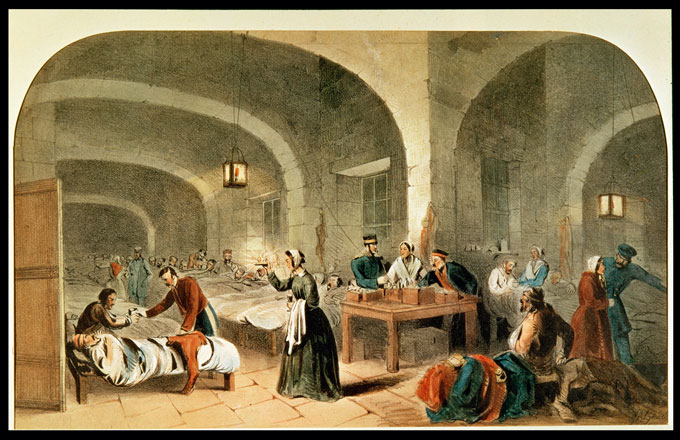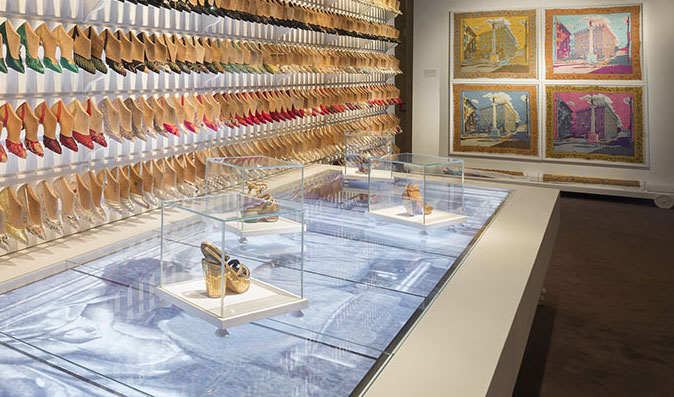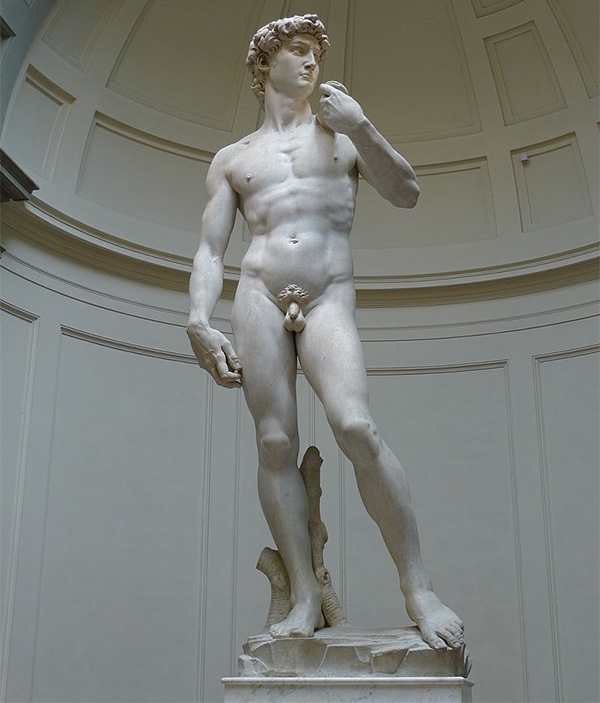As I write this, I'm waiting for our students to return from their weXplore, a five-day excursion that takes students beyond their host city for immersive cultural experiences. For the past two months, we as a school have called Maun, Botswana, our home. It's a small town on the edge of the Okavango Delta and, for many travelers, a doorway into Africa. But Maun is only one perspective, and it...
Read MoreThis week, THINK Global School kicked off its term in Florence, Italy. To celebrate, we’ve put together a list of seven interesting facts about our new host city. So whether you’re working on a school project or planning a trip to Florence yourself, we hope these interesting facts shine a little light on the “city of lilies.” Now on to the facts!
1) Florence Nightingale was born here
Florence is known for being home to somee of the greatest artists to ever pick up a paintbrush or chisel: Michelangelo, Donatello, and Leonardo da Vinci all crafted their stunning masterpieces here (the fourth Ninja turtle namesake, Raphael, was more of a nomad who eventually settled in Rome. Much like the red-masked amphibian, he marched to the beat of a different drum). It’s not just painters, sculptors, and inventors that Florence has produced, though. In fact, the mother of modern nursing was born here as well: Florence Nightingale (appropriately named after the city of her birth) was born in Florence on May 12, 1820, while her parents, William Edward and Frances Nightingale, were on a “grand tour” of Europe — an educational rite of passage, mostly taken by Britain’s upper class, focused on soaking up the Rennaisance while hobnobbing with Europe’s aristocracy. The “Lady of the Lamp’s” parents would move back to England in 1821 at the conclusion of the grand tour, taking young Florence with them.

Florence’s nickname stems from the oil lantern she carried
While Florence Nightingale would never return to live in Italy, preferring instead to spend her days in London, a memorial was crafted by Francis William Sargant upon her death in 1910 and placed in the cloister of Florence’s Basilica of Santa Croce.
2) Europe’s first paved streets can be found in Florence
You might have heard the proverb “all roads lead to Rome” once or twice in your life, essentially meaning there are many different methods to arrive at the same goal. The phrase dates back to Ancient Rome, when, starting around 500 BC, the Romans began constructing over 250,000 miles of roads and highways, making the transport of goods and armies incredibly efficient. While Rome gets all of the credit for its fancy roads leading in and out of the city, Florence can be proud of the fact that in 1339 it became the first European city to have paved streets. Word of caution to those traveling here: getting around Florence can be a puzzling affair for those relying on paper maps. The numbers jump around, appear in red and black, and street names don’t always match up correctly. Florence is far too beautiful for you to spend much time staring at your cellphone, but in this instance, using your GPS to get around is the smart way to go!
3) Museo Ferragamo is home to more than 10,000 pairs of designer shoes
Can you name the “Big Four” fashion capitals of the world? Congrats if you can -clearly you’re a fashionista- but no shame if you can’t: they are Paris, Milan, London, and New York. While Milan might get the credit for Italy’s fashion trends, Florence is no slouch itself. Trendsetting designers Salvatore Ferragamo, Emilio Pucci, Gucci, and Roberto Cavalli all were either born in Florence or moved there during the height of their careers, and all four brands still maintain their headquarters here. If you absolutely positively can’t get enough of designer shoes, you’ll definitely want to stop by the Salvatore Ferragamo Museum, which houses over 10,000 pairs of the esteemed luxury designer’s footwear. Even better, the shoes are rotated out on a bi-annually basis, so you’ll always have 10,000 new reasons to visit Florence again. The museum can be found in the Spini Feroni building, a gothic palace built in 1289.

Image courtesy of Ferragamo.com
4) Even Hitler was in awe of Florence’s beauty
Have you ever viewed a collection of art and felt physically overwhelmed by its beauty? There’s an actual term for this: Stendhal Syndrome, also referred to as Florence Syndrome. The term derives from the nineteenth century French author Henri-Marie Beyle’s visit to Florence’s Basilica of Santa Croce, where he became absolutely emotional upon viewing Giotto di Bondone’s ceiling frescoes:
“I was in a sort of ecstasy, from the idea of being in Florence, close to the great men whose tombs I had seen. Absorbed in the contemplation of sublime beauty…I reached the point where one encounters celestial sensations … Everything spoke so vividly to my soul. Ah, if I could only forget. I had palpitations of the heart, what in Berlin they call ‘nerves.’ Life was drained from me. I walked with the fear of falling.”
Beyle is hardly the only one to experience this psychosomatic illness; since he first reported it, hundreds of people have reported symptoms like confusion, anxiety, and an increased heart rate while viewing Florence’s Renaissance masterpieces. Even Hitler reportedly fell victim to Florence’s charm: when the Germans were fleeing from Florence during World War II they blew up all of the bridges except for one: the iconic Ponte Vecchio. Rumor has it that Hitler was so taken with the medieval arch bridge and its colorful assortment of storefronts that he couldn’t bring himself to bomb it. Whatever the case, it’s to the world’s benefit that the Nazis left it standing.
5) Galileo’s digits are on display here
Galileo made enormous contributions to the fields of astronomy, physics, engineering, and mathematics, but apparently that wasn’t enough to preserve him the dignity of staying buried intact. Nearly 100 years after a temporary burial, Galileo’s remains were finally exhumed and prepared to be properly buried at Florence’s Santa Croce Basilica (strange in itself given Galileo’s contentious relationship with the Catholic church — safe to say they were not fans of his discoveries, which ran counter to their own divine teachings). During the transfer of Galileo’s remains, Anton Francesco Gori decided he couldn’t help but take home a macabre souvenir, and proceeded to snap off one of Galileo’s middle finger. Over time, the finger found its way to the Galileo Museum, where it has been reunited with one of Galileo’s index fingers, thumbs, and teeth (unknowingly purchased by art collector Alberto Bruschi during an auction). Galileo’s middle finger now points towards the sky, fitting for a man so transfixed by astronomy.

Galileo’s middle finger on display
6) A notorious serial killer once prowled Florence’s countryside
In terms of notoriety, no serial killer is as infamous as London’s Jack the Ripper, the unidentified soul who stalked London’s Whitechapel district from 1888 to 1891, leaving eleven grisly murders in his wake. Between 1974 and 1985, Il Mostro (the monster) made a name for himself while wreaking havoc in the hills of Florence, targeting seven couples —fourteen people were murdered in all— while they were camping or in parked cars. Over 100,000 men have been interviewed about the Il Mostro crimes resulting in over a dozen arrests. During these incarcerations, however, the killer would strike again, using the same Baretta each time, always murdering in pairs, and often performing ritual mutilation. The crimes were never solved, but they have become the subject of multiple books, including the excellent Monster of Florence by Douglas Preston and Mario Spezi, No time to read? A film adaptation starring George Clooney is currently in the works.
7) Queen Victoria was appalled by Michelangelo’s David
It’s safe to say that each of the world’s cultures have different societal norms, something that we as a traveling high school are constantly finding out. The Japanese, for example, place a premium on manners and consider blowing your nose in public incredibly rude. In the same vein, many countries have different views on art, nudity, and nudity’s place in art, and these views are often based on religion. During the Renaissance, Italian artists once again turned to nudity for inspiration after avoiding it since the Classical Era, concentrating instead on more modest Catholic themes, such as celibacy and chastity. Emboldened by the human form, Michelangelo went on to create three of the most highly regarded pieces of art ever: David (1501-1504), The Last Judgment (1536-1541), and the Sistine Chapel ceiling (1508-1512).

Michelangelo’s statue of David
Fast forward a little over 300 years to 1857: England’s Victorian era is very much in full effect, and it’s safe to say that Victorian nobility did not embody the same values as the masters of the Renaissance. Puritanism and politics were very much intertwined, and Queen Victoria’s England was very much under a strict moral code. Imagine then, if you will, the look of horror on Queen Victoria’s face when she was presented with a twenty-foot tall plaster replica of David as a gift! To avoid further embarrassment in the future, a plaster fig leaf was commissioned to be strategically placed in front of David’s privates during royal visits. The leaf is now on display alongside the cast of David at the Victoria and Albert Museum in South Kensington, London. Given Prince Harry’s bouts of cheekiness, England’s royal family has certainly loosened up a bit since the nineteenth century.

The leaf
Enjoy the facts?
Stay tuned to our blog to learn more about our own adventures in Florence, Italy!